When we designed the interaction system of “Ceasing to be Her Demise”, our latest game and the final episode of our “Fragments of Being Her Demise” trilogy, we knew one game design decision would surely cause controversy: The player can‘t just pick up every object he runs into but Selina, the protagonist of the series, decides by herself if she picks it up or not. Coming from other point & click adventure games, this could feel awkward. We are very aware that the “Loot every object you come across”-principle is as old as adventure games are, but we decided to try another approach.
In „Being Her Darkest Friend“, the predecessor of Selina‘s final episode, there is one puzzle where she has to burn a book in a trashcan. She has to use a burning cigarette located in an ashtray nearby, but she also has to be know that she needs to burn the book at all to pick up the cigarette. When she interacts with the cigarette without knowing about the book, she just won’t pick it up. Why should she carry a stinking, burning cigarette with her? She has to interact with the book in the trashcan once, so she knows what to do with the cigarette and then she will pick it up. Totally understandable that this caused confusion among a lot of players.
For Ceasing to be Her Demise we tried to solve this issue by introducing the „memo“ system: When Selina interacts with objects that could be useful later, but are not at the moment, a memo-icon appears in the inventory. This item is purely passive and the only interaction possible is examining it. But every time the player interacts with the memo, he gets information about the object. This should help to find clues on how and why to pick up the object or on how to solve the related puzzle.
So, if this memo-system would have already existed in Being Her Darkest Friend, Selina would have got a „Cigarette“ memo when she interacted with the cigarette without knowing that the book needs to be burned.
We‘re pretty happy with the memo-system in Ceasing to be Her Demise, but since a lot of players complain about not being able to just pick up and combine everything they find in the game, we‘d like to point out the two main reasons that lead to our design decision:
1) We don‘t like the looting-aspect of most adventure games. Being able to pick up everything quickly fills up the inventory and when the number of carried items exceeds about seven, it usually gets hard for the player to keep track. Hiding all the items in a separate off-screen inventory which has to be manually opened adds to the problem. The player easily gets stuck at puzzles because of the overwhelming and confusing number of items and seemingly possible interaction options. As a result, he starts to randomly combine every single item with every single other item and object in the game the trial-and-error-way.
This is a problem that has existed since the dawn of adventure games and has never really been solved, but only bypassed by giving the protagonist a reason to pick up (aka steal) everything he finds (Pirates anyone?). In our opinion, that‘s one of the reasons why the most successful point & click adventure games of the past almost always have been of a comical and cartoonish nature.
2) Selina, the protagonist, is not a mindless puppet who does everything the player commands her to, but she decides for herself, according to her current knowledge. The player isn‘t a puppet master, but more of a director, who only pushes Selina in the right direction, but the actual actions are her own.
This comes with a cost: It only works if a player plays the game for the very first time and has exactly the same knowledge as the protagonist. When the player plays the game again and already knows the solution of all puzzles, he can easily get annoyed by Selina, who just doesn‘t want to do things because she has less knowledge than the player. On the other hand we found out that in modern times the vast majority of players never plays a game more than once – or he watches a Let‘s Play video of someone who is playing the game for the first time. So that‘s a price we are willing to pay.
Summarized, that‘s our take on how to solve, or at least reduce those ancient adventure-game problems in Ceasing to be Her Demise:
1) Selina is not a mindless puppet controlled by the player, but makes her own decisions based on what her current knowledge is.
2) If it doesn’t make sense to pick up an item at the moment, but it will be useful later, the item will get a passive memo-inventory object. This prevents the player from randomly playing the „desperately combine everything with everything“-meta game.
3) Drastically reduce the number of items in the game world, so the protagonist can only pick up and carry around few items and they always stay in his short time memory. We think that the player should never carry around more than seven items at the same time.
4) Never hide inventory items in off-screen menus but always show them on screen. This way the player always sees them and never forgets about them.

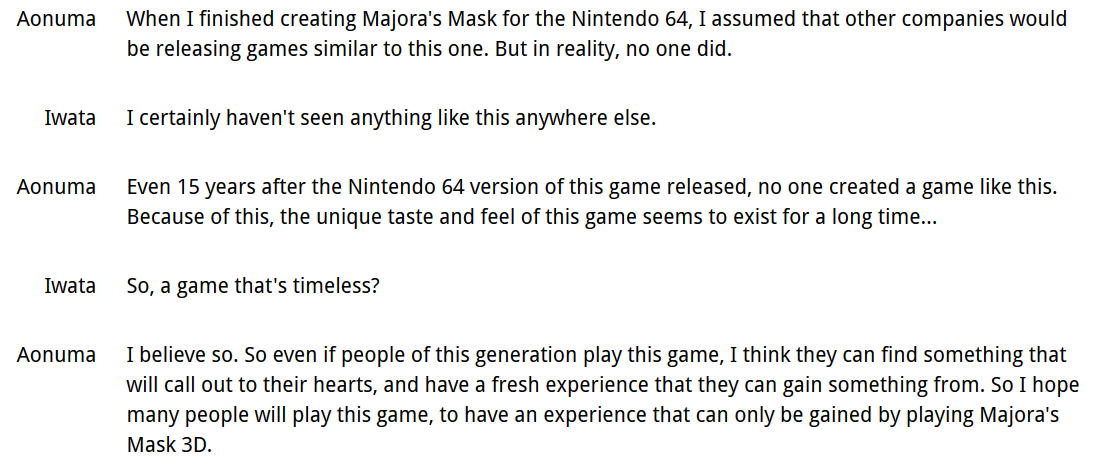
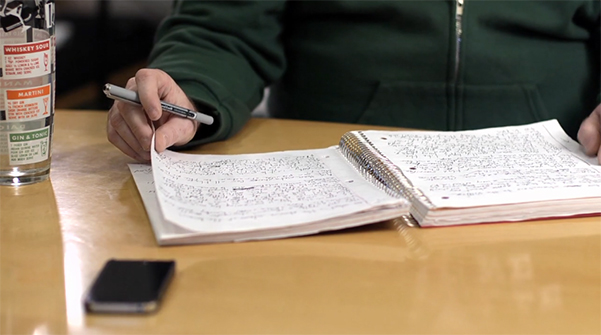
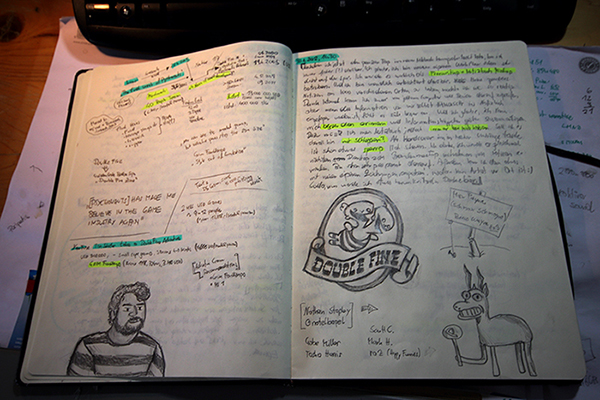
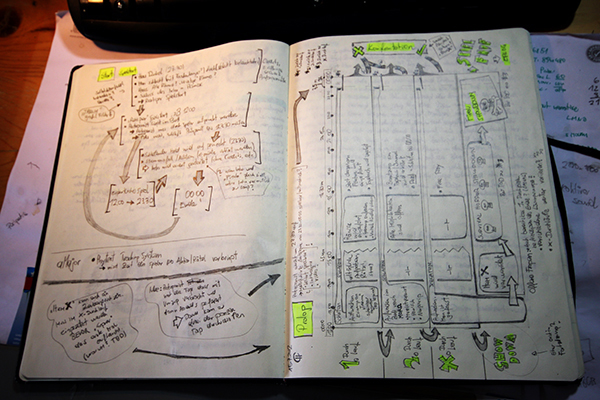
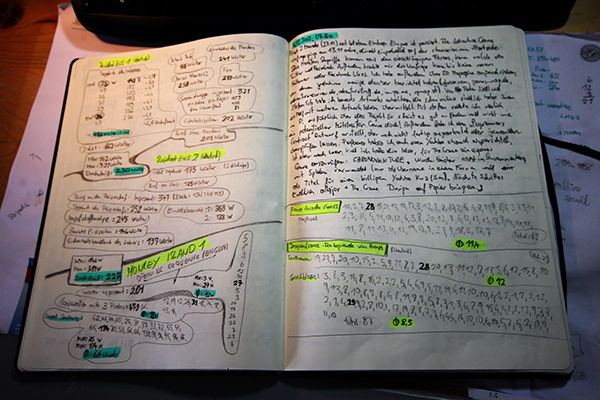
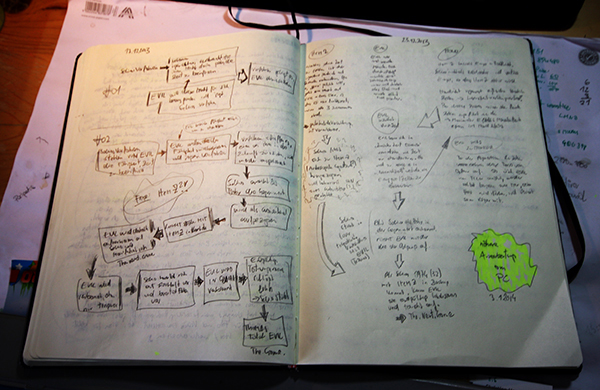
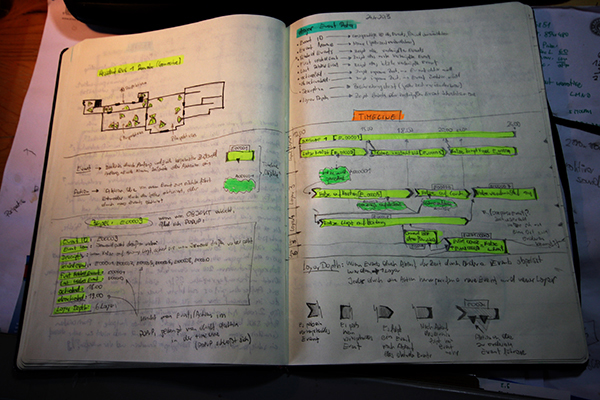
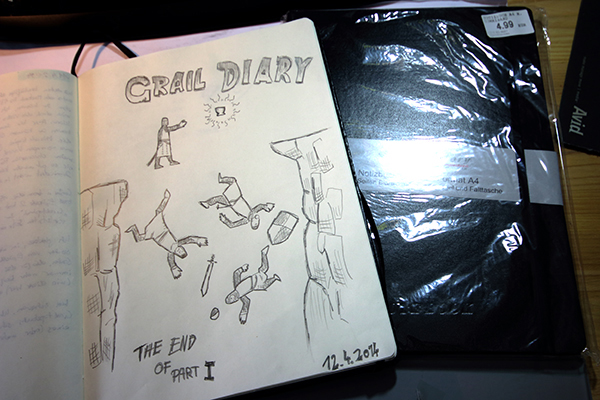 Thanks for reading!
Thanks for reading!